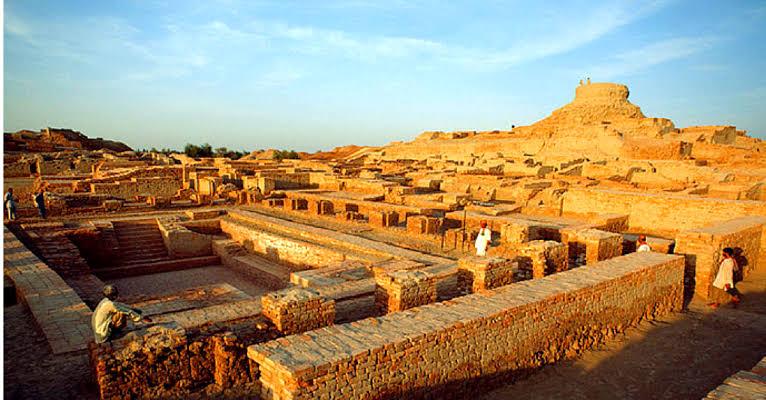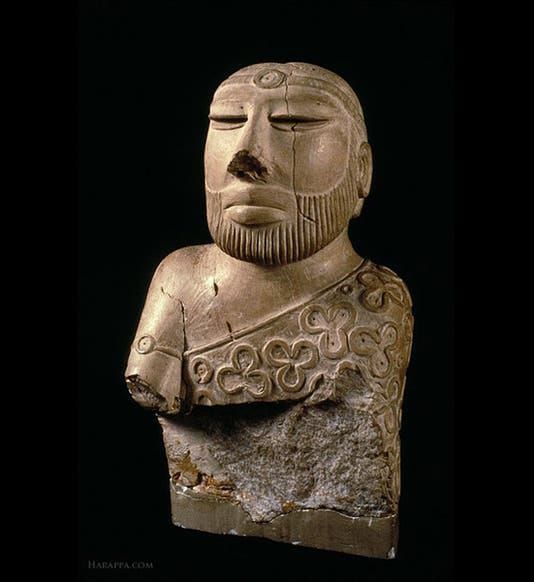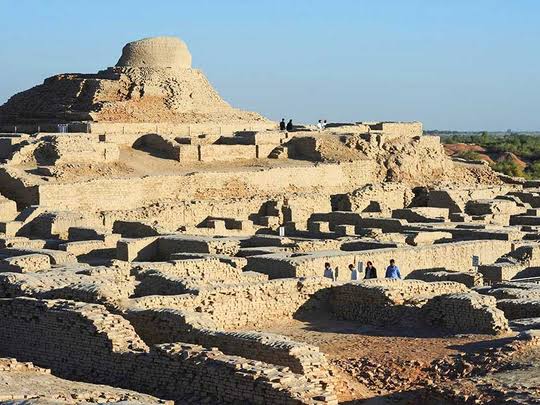The Indus Valley Civilization: One of the First Urban Societies in the World
Table of Contents
Introduction
The Indus Valley Civilization, or Indus for short, was referred to as the Harappan Civilization. It ranks among the oldest and most advanced ancient civilizations globally. Emerging about 2500 BCE along the banks of the Indus River – in what is now modern Pakistan and northwest India – this civilization was remarkable for its advanced urban planning, architecture, and social organization. Its rediscovery in the last century of the 20th century, otherwise buried in obscurity for millennia, has provided us with profound insight into early human society and culture.
This paper will focus on the background, culture, success, and mystery of the Indus Valley Civilization-the origin of its central towns, its success, and the way it declined with time.
Background
The Indus Valley Civilization is one of the oldest known civilizations that existed from 2500 BCE to 1900 BCE. It is often described alongside other super civilizations of the ancient world such as Mesopotamia and Ancient Egypt. What differentiates the Indus Valley is the efficient planning of cities and sophisticated social systems compared to the rest of the ancient civilizations. Rediscovered in the 1920s, the civilization was of great importance to archaeologists, historians, and other researchers.
Extremely little is known about this Indus Valley, especially in the areas of language and the reason why it declined.

Geography and Extent of the Indus Valley Civilization
Location and Size
This civilization was situated around the Indus River and its tributaries that stretched into modern-day Pakistan, parts of northwest India, as well as even parts of Afghanistan. It covered an area of over 1.25 million square kilometres and is considered one of the oldest civilizations on the planet.
Capital Cities: Harappa and Mohenjo-Daro
The two best-known cities of this civilization are Harappa and Mohenjo-Daro. Harappa, in present-day Punjab, Pakistan, was the first site unearthed in the 1920s which gave the civilization the alternate name, the Harappan Civilization. Mohenjo-Daro is located in Sindh, Pakistan, and enjoys great architecture with the famous “Great Bath.”
Chronology of the Indus Valley Civilization
The Indus Valley Civilization can be broadly divided into three major phases:
Early Harappan Phase (3300-2600 BCE)
Agriculture had its early roots and small or scattered villages were developed. Pottery, metal tools, and scanty trade net began taking place in this period.
Mature Harappan Phase (2600-1900 BCE)
This is a phase where the civilization reached a golden era. Developed cities like Harappa and Mohenjo-Daro were developed with wider urban planning and even trading even took place with far distant regions such as Mesopotamia.
Late Harappan Phase (1900-1300 BCE)
The cities began to shrink gradually and collapsed eventually. People deserted their towns and moved to the villages
Urban Design and Architecture
The urban design of the Indus Valley Civilization is very developed. The cities were grid-structured whereby streets intersected at right angles.
Grid-Layout Cities
Harappa and Mohenjo-Daro were planned cities. Wide roads were complemented by narrow lanes, and houses were identical in architectural design. The city possessed a grid pattern, but that is one of the earliest in known history.
Advanced Drainage Systems and the Great Bath
The most imposing works of the Indus Valley Civilization are “Great Bath” at Mohenjo-Daro. This was a large public bathing area, hence showing concern for hygiene and ritual cleanliness. It has advanced systems of drains, even with covered drains parallel to the main roads, hence leading waste away from houses and public areas. Such sanitation finds no match anywhere by any other civilization till then.

Economy and Trade
Agriculture in the Indus Valley
The economy of the Indus Valley relied primarily on agriculture. The Indus was full of fertile plains promising wheat, barley, peas, and cotton. The presence of an irrigation system indicates that Harappans had perfected techniques of water management meant for their agriculture.
Extensive Trade Networks
Trades were not confined just to the Indus Valley region. Archaeological finds show trades with Mesopotamia, the Persian Gulf, and Central Asia. Beads, pottery, cotton, and precious metals are indications of a thriving well-linked economy.
Society and Social Organization
Social Structure and Everyday Life
Although the Indus Valley society was a very advanced civilization, not much is known about the specific type of social structure. This is quite a contrast, as in Egypt or Mesopotamia, the availability of kings or ruling classes is directly evident, but in the Indus Valley, no conclusive evidence exists regarding the existence of monarchies. Society appears more egalitarian in character, as grand palaces and temples that would point to a ruling elite do not exist.
Classless Society Evidence?
Many researchers believe that this society was classless due to the scarce archaeological evidence of warfare, weapons, and a division of strict social classes. Nevertheless, the housing size and quality vary, thus indicating a level of social stratification.
Religion and Beliefs
The religious practices of the Indus Valley Civilization are generally speculative since no text has been deciphered and only a little material evidence is available. Some insight can be taken from the artifacts and the structures.
Religious Practices and Gods
Proof is in the form of seals, miniatures and other similar objects that the inhabitants of Indus followed the worship of various gods. The fact that seals existed with a figure bearing an uncanny resemblance to the Hindu god Shiva in a yogic pose has led some scholars to believe that early forms of Hinduism or proto-Shiva worship were being practiced at the time.
Seals and Symbols, the Role in Artifacts
The Indus Valley Civilization used seals in comprehensive administrative and religious contexts. The seals of animals, deities, or symbolic motifs suggest a deep spiritual and cultural behavior of people in that era. Such seals have been unearthed at many Indus sites. Thus, the fact that they are present at so many Indus sites proves that in trade and religious rituals, seals were widely used.

Writing and Language
The Indus Script: Still Undeciphered
Most of the persistent questions surrounding the Indus Valley Civilization relate to its writing system, known as the Indus script. Several attempts have been made to decipher this script with little success. These are brief inscriptions found on seals and other artifacts and on pottery, and scholars can’t arrive at a consensus whether the system represents a complete language or a proto-writing system.
Attempts to Understand the Script
Other theories have been advanced to explain the Indus script, supposing it may be associated with early Dravidian or Indo-European speech. But since no more inscriptions nor a bilingual text-like the Rosetta Stone for Egyptian hieroglyphs-exists, the exact meaning remains a mystery.
Technology and Craftsmanship
Tools, Pottery, and Metallurgy
The Indus Valley Civilization was advanced in its metallurgy and craftsmanship. People of the Indus Valley Civilization used bronze tools and weapons, copper and tin, and were among the first ones to produce items such as standardized weights and measures. Their pottery-decorated frequently with intricate designs-indicates their technological advancement.
Advances in Textile Production
The Indus Valley is also said to be responsible for the first recorded production of cotton fabrics. There are a number of spindle whorls and pieces of cotton cloth found at excavations as well, so textile manufacturing must have been a significant enterprise.
Role of women in Indus Valley society:
There is scarce direct evidence regarding gender roles in the Indus Valley Civilization, but terracotta figurines of women have led scholars to believe that women could have played major roles in religious or social life. Some of these figurines are dressed and jeweled with such richness that they hint at a status of an important person.
Secrets and Decline of the Indus Valley Civilization
One of the greatest ancient mysteries is the decline of the Indus Valley Civilization. Somewhere around 1900 BCE, the big cities started to decline and eventually vanished into thin air.
Reasons for Decline
Various theories exist regarding the breakdown of the Indus Valley Civilization. Such theories include a change of climate, especially a shift in the Saraswati River that would have been impossible to sustain agriculture, as well as invasion by nomadic groups, such as the Indo-Aryans, that caused the civilization’s downfall. Other possibilities include the problems that were created inside, such as political instability or disease.

Climate Change, Invasions, or Internal Collapse?
No one can provide the answer to this question, which has haunted everyone since time immemorial, because there are several theories. Most likely the changes came as an environmental or social measure, which continuously demolished the once-thriving Indus Valley civilization.
The economy of the Indus Valley relied primarily on agriculture.
Influence on Later Cultures
The Indus Valley Civilization left a legacy which, in turn, was profoundly felt throughout the subsequent cultures of the Indian subcontinent. Elements of Harappan culture such as urban planning, craftsmanship, and perhaps even some kind of religious thought influence later civilizations, among them even the Vedic culture.
Contributions to World Heritage
Advanced in urban planning and technological innovations, the Indus Valley Civilization has earned a place as one of the world’s greatest ancient civilizations. Today, the ruins, which lie mainly between Harappa and Mohenjo-Daro, are UNESCO World Heritage sites that scholars and tourism around the world visit.
Rediscovery of the Indus Valley Civilization
Early Discoveries of Harappa and Mohenjo-Daro
It had almost been lost to history until its rediscovery in the 20th century. Digging begun by the archaeologist Sir John Marshall in 1921 at Harappa and Mohenjo-Daro, unearthed the now lost so advanced civilization.
Recent Archaeological Research
Since then, many excavations have been done, and more information about their daily lives, economy, and technology was gathered. However, much is not known yet; further researches are unearthing new facts about this ancient society.
Contemporary Interpretations and Theories
Culture from Excavations
Artifacts and ruins will greatly provide clues about the people of the Indus Valley and their lifestyle. Careful excavation with keen analysis by archaeologists has pieced together such a view of a most-organized and peaceful society with advanced knowledge of engineering, trade, and craftsmanship.
Recent Discoveries and New Theories
Some recent discoveries, like the discovery of forgotten settlements and ancient milestones in genetics research, have been able to answer some questions but raise new ones: how, for example, DNA from ancient Indus sites can trace the origins and migrations of its people.
Conclusion: Why the Indus Valley Civilization Still Matters Today
The Indus Valley Civilization offers much to historians, archaeologists, and enthusiasts. Its complex urban planning, its technological progress, and the mysterious nature of its collapse all continue to teach valuable lessons and provide useful insights into early human society. While many secrets continue to be hidden, the contribution of the Indus Valley legacy remains a testament to the ingenuity and resilience of ancient cultures, and its value in city planning, trade, and technology has much to say about shaping the modern world-that would leave it amongst the most important civilizations in the history of humankind.
Faqs
During what period did the Indus Valley Civilization reach its height?
The Indus Valley Civilization reached its peak in the Mature Harappan phase, between 2600 and 1900 BCE.
Which were the key cities of the Indus Valley Civilization?
The most famous cities were Harappa and Mohenjo-Daro, both known for their advanced urban planning.
What caused the decline of the Indus Valley Civilization?
Theories have varied from climatic change to invasions and even internal causes but nothing is known for sure.
Is the Indus script deciphered?
No. Deciphered? No. Countless attempts have been made since its discovery to grasp an understanding of this undeciphered script.
What legacy does the Indus Valley Civilization leave behind?
The civilization had an influence over later Indian subcontinent cultures and helped to found city planning, trade, and technology.




